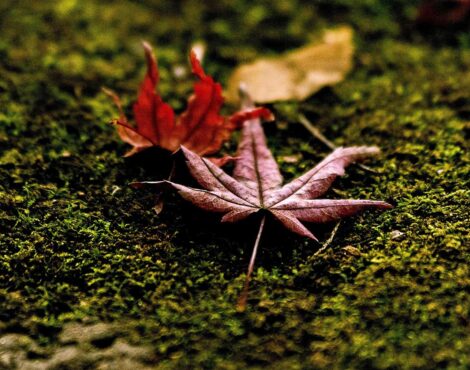When winter slips quietly away, Corfu awakens in color. The first warm breezes of March bring not only brighter sunlight but a fragrance that seems to spill from every valley and hillside. This is the season when the island turns into a living garden, where wild orchids bloom beside olive trees, fields shimmer in yellow and purple, and the air is perfumed with orange blossom and fresh herbs. For those visiting Corfu in springtime, walking through this landscape is one of the most rewarding ways to discover its true heart.
A Season of Renewal
Spring in Corfu lasts from late February to early May, and during these months the island is a spectacle of natural rebirth. Rain from the mild winter nourishes the soil, while soft sunshine ushers in a brilliant palette of colors. The hillsides of Pelekas, Gastouri, and Lakones glow with flowering broom, while meadows near the Ropa Valley fill with daisies, poppies, and wild mustard. Each step through this countryside feels alive buzzing bees, singing birds, and the rustle of lizards darting through dry leaves.
Corfu’s unique position between Greece and Italy gives it a blend of Mediterranean and Ionian vegetation unlike anywhere else. More than 6,000 species of plants have been recorded here, some found only on this island. Many locals look forward to early spring for another reason: it’s wild asparagus season, when fresh green spears appear among the olive trees and end up on kitchen tables within the hour.
The Fragrance of Blossoms
One of the first signs that spring has arrived is the scent. In the lower valleys, citrus groves come to life with white blossoms that perfume entire villages. The aroma of orange and lemon trees travels through the air, mingling with the honeyed notes of wisteria climbing old stone walls. Almond trees, often the first to bloom, create pale pink clouds above the fields, while wild thyme and oregano release their earthy sweetness underfoot.
If you wander through the village lanes of Sinarades or Skripero on a warm April morning, the mix of blossoms, freshly cut grass, and distant sea breeze feels intoxicating. This is the kind of atmosphere that has inspired painters, writers, and poets for centuries from the Venetians who cultivated gardens around their villas to modern visitors who come simply to breathe in the air.
Walks Among Wildflowers
The best way to experience the scent and color of Corfu in spring is on foot. The island is covered with ancient paths known locally as monopátia that connect small villages, chapels, and farms. Many of these trails have existed since Venetian or Byzantine times, now rediscovered by hikers and nature lovers.
One of the most beautiful routes begins near the village of Lakones, above Paleokastritsa. A stone-paved path winds through olive groves bursting with anemones and miniature irises, then opens onto a panoramic view of the sea. The combination of wildflowers and salt air makes this walk unforgettable. Another rewarding route starts from Gastouri, home of the Achilleion Palace, and leads through lemon groves to rolling meadows filled with cyclamen and flowering almond trees.
In central Corfu, the plateau of Afra and Potamos offers easy walks along farm tracks bordered by wild fennel and chamomile. In spring, the Ropa Valley becomes a haven for herons, songbirds, and butterflies attracted to the blossoming vegetation. The gentle sound of bees in the nearby apiaries blends with the rustling of the reeds a peaceful reminder that Corfu’s rhythm follows nature, not the clock.
The Olive Grove Miracle
No image defines Corfu better than its olive trees. Over four million of them blanket the island, some several centuries old. In spring, these groves transform into oceans of green and silver dotted with yellow daisies and crimson poppies. Walking through them, you feel enclosed by filtered light as if under a cathedral roof of leaves.
Many paths from central villages like Danilia, Agios Ioannis, or Liapades take you deep into these groves, where the rich scent of earth and new growth fills the air. Locals often pause to collect herbs—mint, sage, or fennel while the distant sound of goats’ bells echoes across the valley. For photographers and nature enthusiasts, this is pure magic: sunlight beams through the branches, illuminating carpets of flowers below.
Blossom by the Sea
Spring doesn’t confine its beauty to the mountains and valleys. Along Corfu’s coastline, flowers grow right to the edge of the sand. At Myrtiotissa, wild rock roses carpet the cliffs above the turquoise sea. Between Gouvia and Dassia, you can walk through fragrant pine paths leading to beaches lined with blooming juniper and oleander. Even in the north, around Kassiopi and Agios Stefanos, the hillsides above the water explode into color.
For a mix of sea breezes and wild flora, try a coastal walk from Arillas to Afionas. The path curves along low cliffs covered in thyme, with wide views across the Diapontia Islands. In April, you may pass locals picking chamomile or long-stemmed clovers for traditional Easter garlands. The view of the sunset from Afionas over the twin beaches of Porto Timoni, framed by golden broom in full bloom, is one of Corfu’s most breathtaking spring scenes.
Traditions Blossoming with the Land
In spring, Corfu’s cultural life blossoms along with nature. Villages hold small festivals celebrating the season’s bounty, from wild greens and flowers to citrus harvests. One long-standing tradition is the creation of wreaths on the first day of May families gather flowers and olive branches to make circular garlands, symbols of joy and renewal, which they hang above doorways until midsummer.
Easter, which often falls during this period, transforms the island. Streets are filled with lilies, violets, and roses used to decorate churches. The scent of incense and blooming flowers fills the air, blending spirituality with the earth’s awakening. It’s easy to see why so many visitors return to Corfu at this time of year—the entire island feels alive, from the sea to the mountain peaks of Pantokrator.
Tips for Enjoying Spring Walks
1. Start early or late. Morning and early evening offer the most vivid scents and gentlest light for photography.
2. Bring water and a hat. Spring days can become surprisingly warm under the Ionian sun.
3. Carry a small field guide. Corfu’s botanical diversity is fascinating; you’ll want to identify the orchids, anemones, and herbs you encounter.
4. Respect the landscape. Avoid picking wildflowers from protected areas, and take only photos or memories.
5. Combine walking with local flavor. Many trails pass by tavernas serving seasonal dishes like omelets with wild asparagus or pies filled with fresh green herbs.
A Symphony of Color and Fragrance
By late May, the island’s wildflowers begin to fade under the strengthening sun, making way for the silvery shimmer of summer. But their memory lingers—in the scent of olive leaves warming in the breeze, in the bursts of pink bougainvillea creeping over stone walls, in the sweetness of honey from Corfiot beehives.
Walking through Corfu in spring is a journey through all the senses. It is the gentle buzz of bees, the laughter of water in mountain streams, and the sight of sunlit petals glowing against deep green foliage. Above all, it is the scent that stays with you—a blend of sea air, blossoms, and wild thyme that defines the island’s soul long after you have left its shores.





